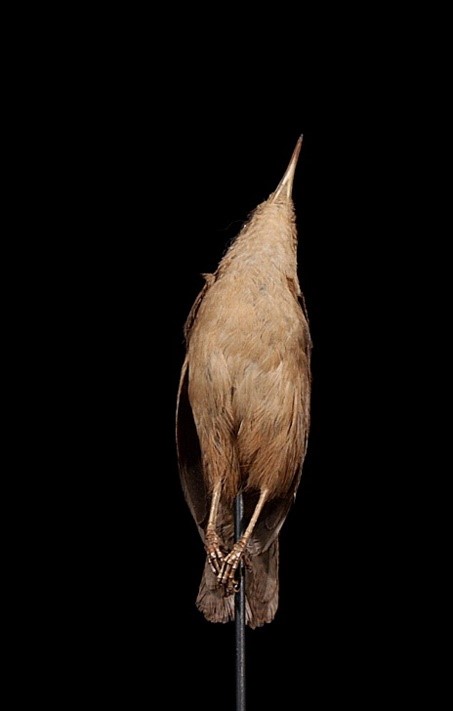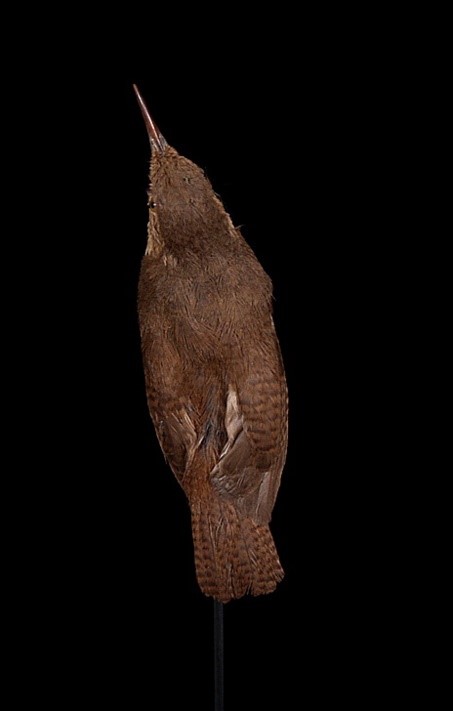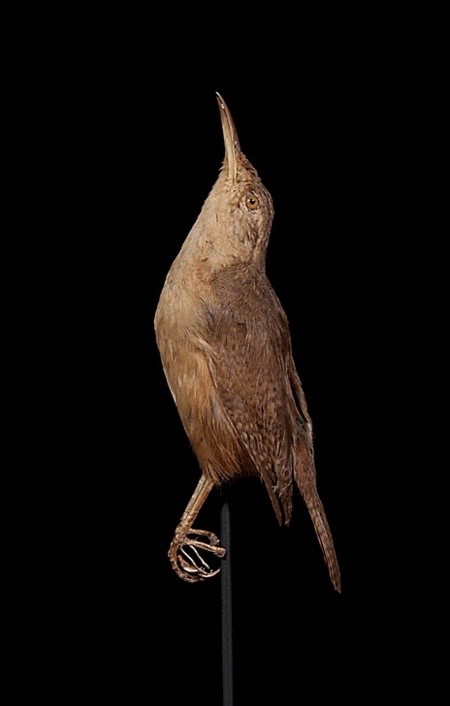Birdfinding.info ⇒ The Martinique endemic form of House Wren was last recorded in 1886. When initially described in 1866, it was believed to be common in forests with thick undergrowth, but it evidently declined rapidly during its mere 20 years of formally recognized existence.
“Martinique Wren” †
Troglodytes aedon martinicensis
Extinct. Formerly endemic to Martinique, where it inhabited the understory of mature forest.
Its extinction almost certainly resulted from the introduction of the mongoose to control rats in the sugar cane plantations, which is also implicated in the extinction of the “Guadeloupe Wren” and the disappearance of many other ground-nesting birds from the Lesser Antilles.
Identification
Warm-brown overall, darker on the upperparts and paler on the throat and breast, becoming a rich shade of cinnamon on the flanks and belly. The wings and tail were rusty-brown with fine dark-brown barring.

“Martinique Wren,” T. a. martinicensis, ventral view. (Specimen ID: RMNH.AVES.110001.) © Naturalis Biodiversity Center

“Martinique Wren,” T. a. martinicensis, dorsal view. (Specimen ID: RMNH.AVES.110001.) © Naturalis Biodiversity Center
Notes
Monotypic form, one of ten or so distinct forms of House Wren—or Southern House Wren, when differentiated—some of which may be best regarded as separate species.
References
Brewer, D., and B.K. MacKay. 2001. Wrens, Dippers, and Thrashers. Yale University Press. New Haven.
Hume, J.P. 2017. Extinct Birds (Second Edition). Bloomsbury Publishing PLC, London.
Kroodsma, D., D. Brewer, and G.M. Kirwan. 2019. House Wren (Troglodytes aedon). In Handbook of the Birds of the World Alive (J. del Hoyo, A. Elliott, J. Sargatal, D.A. Christie, and E. de Juana, eds.). Lynx Edicions, Barcelona. https://www.hbw.com/node/58151. (Accessed December 1, 2019.)
